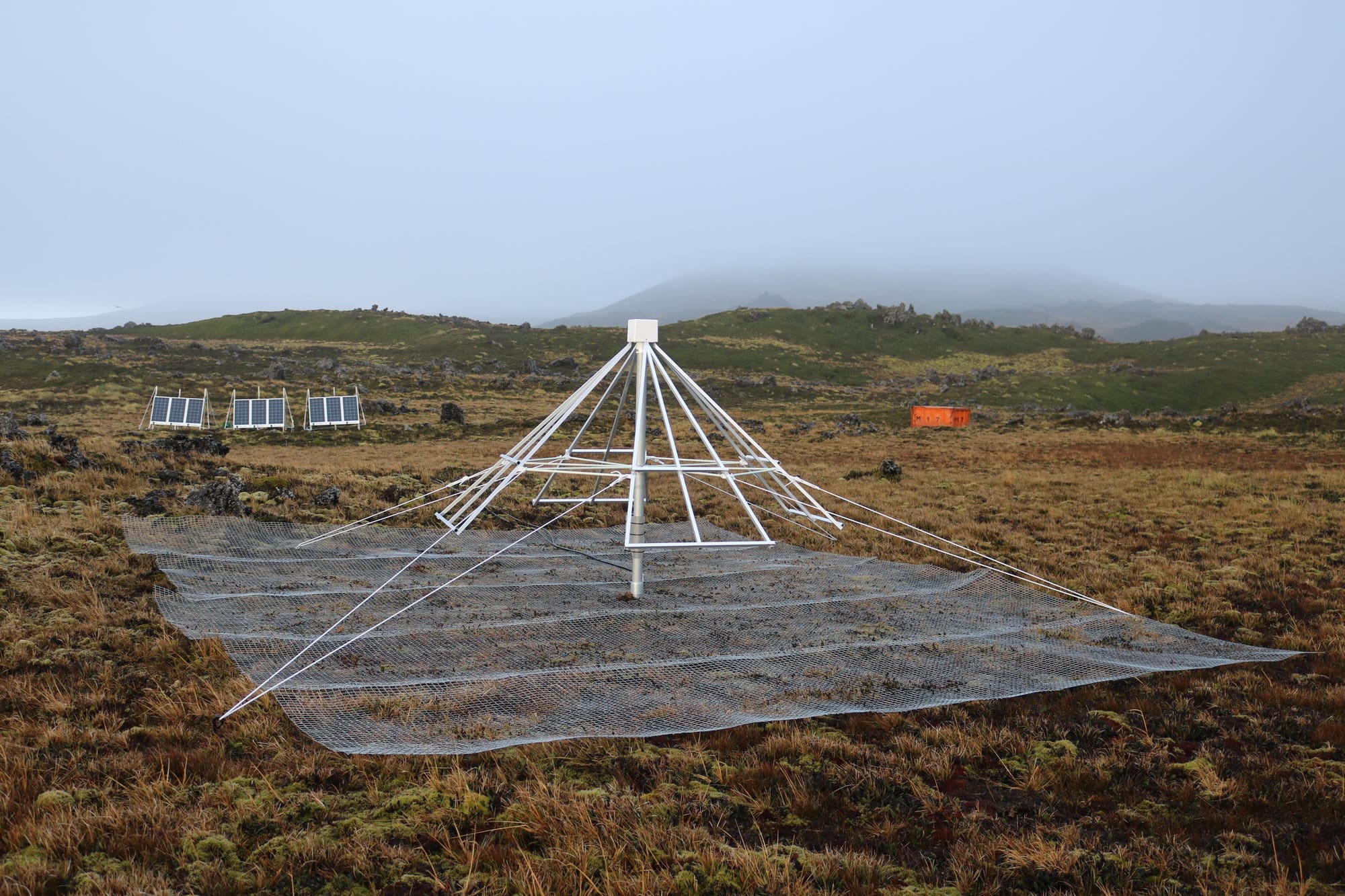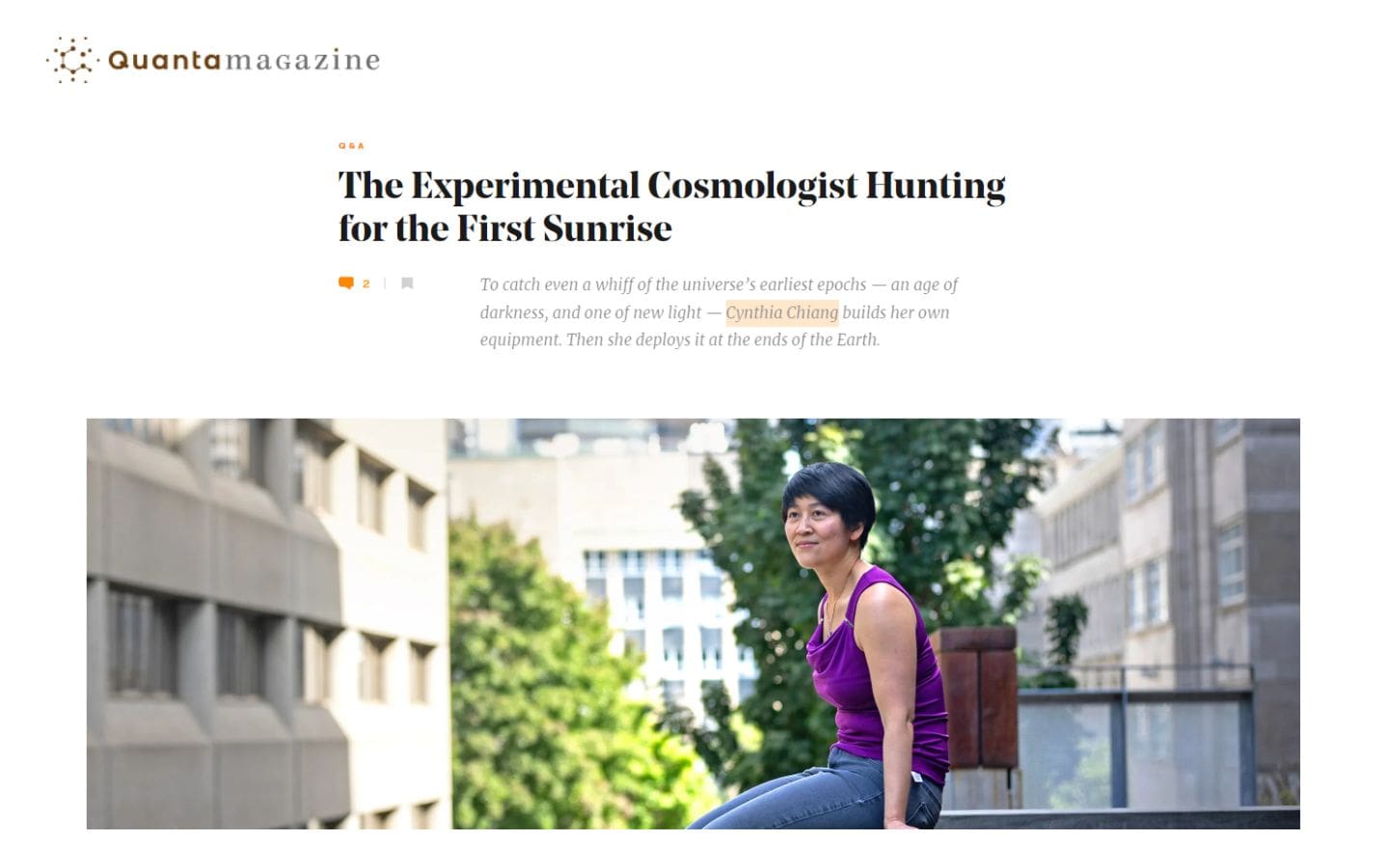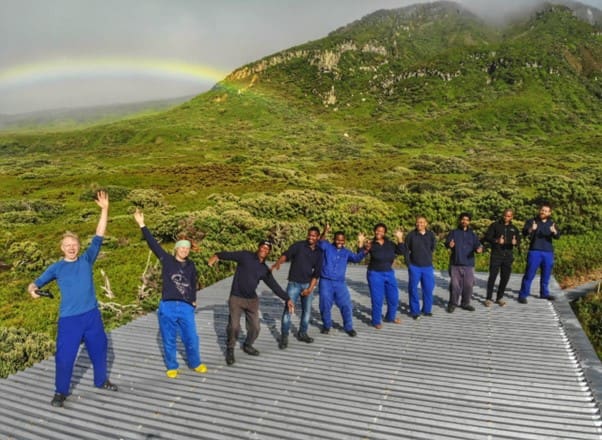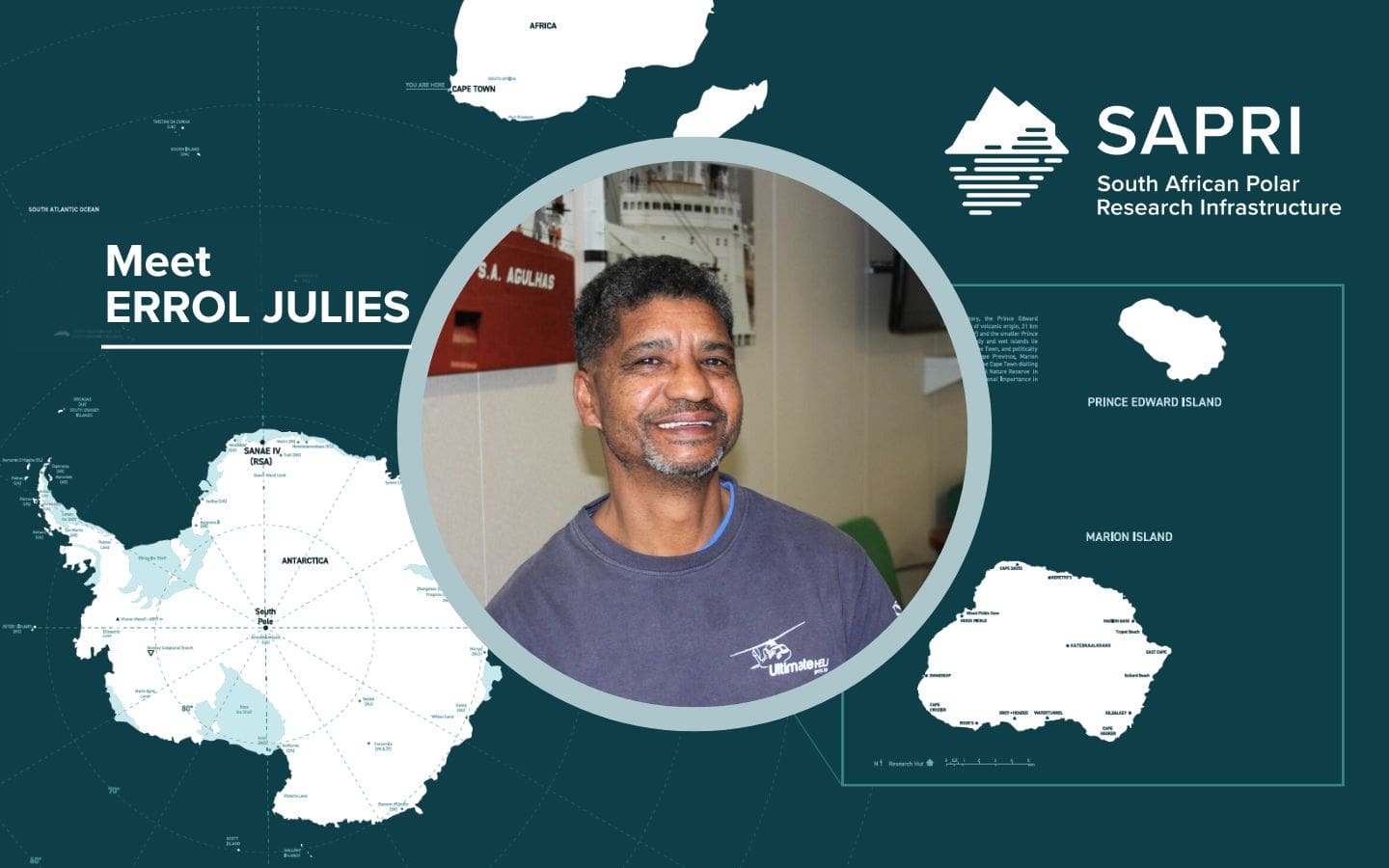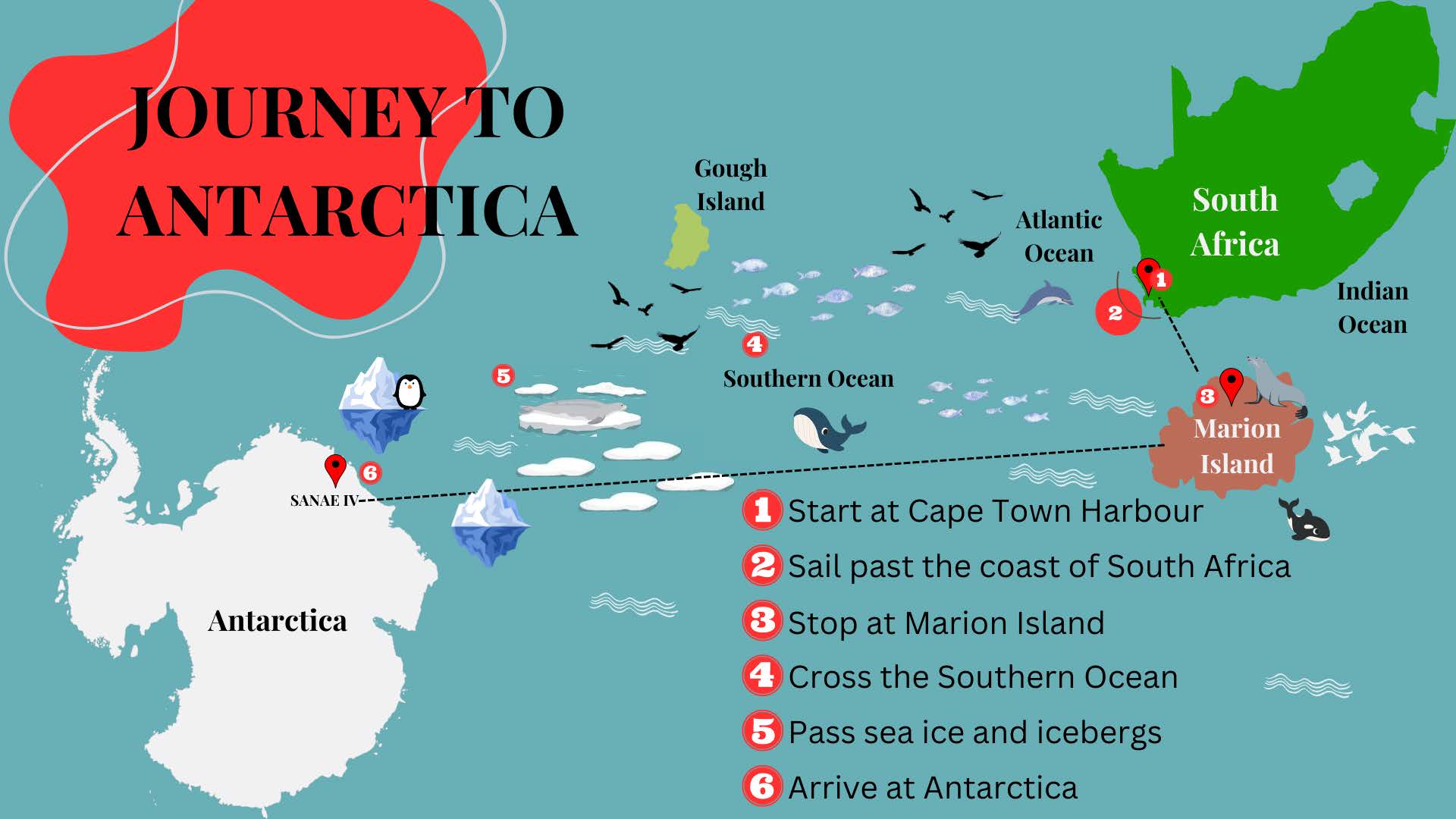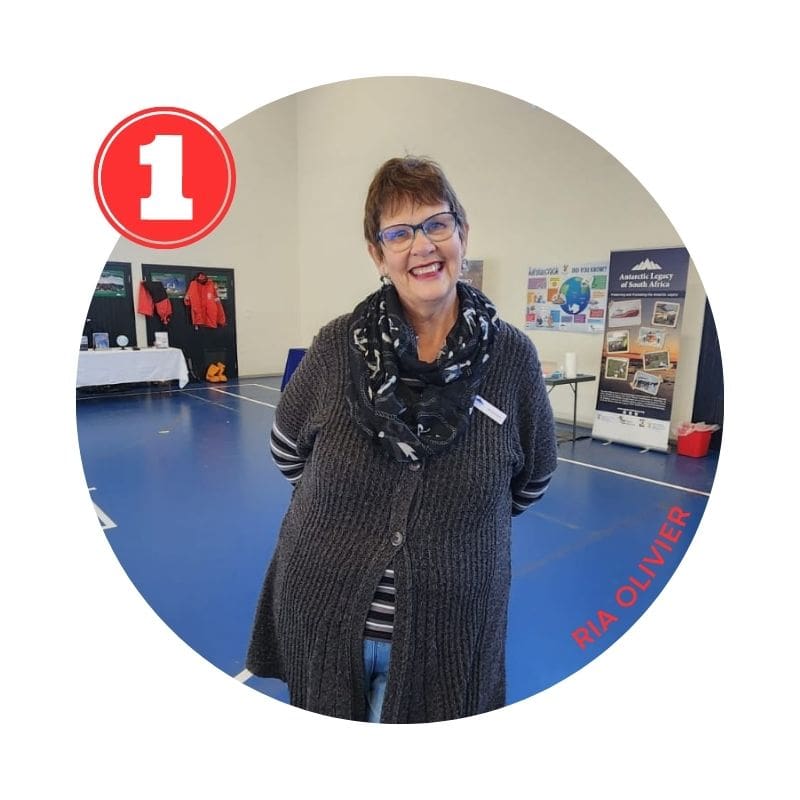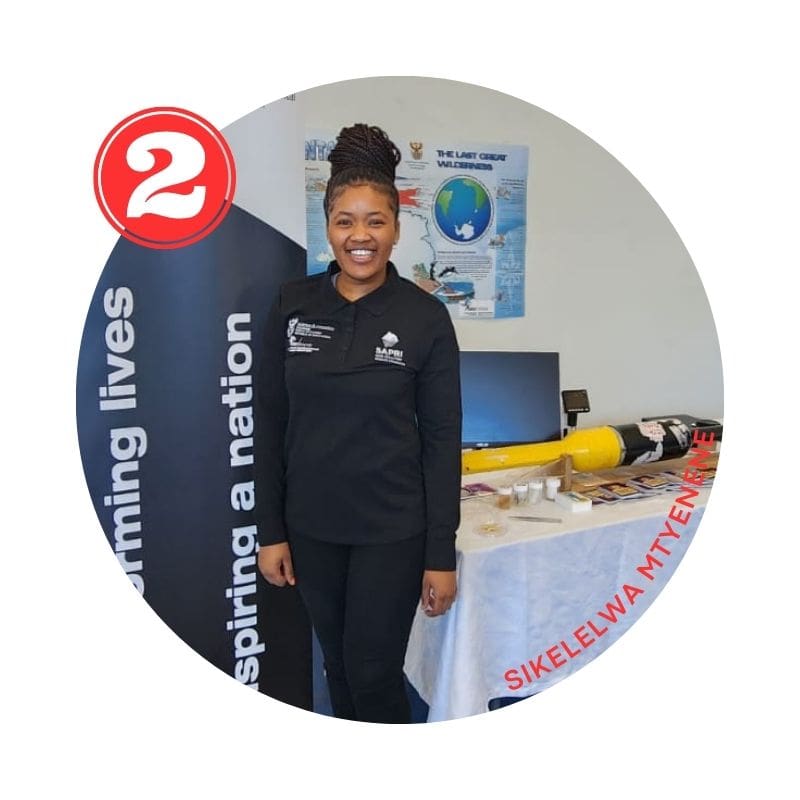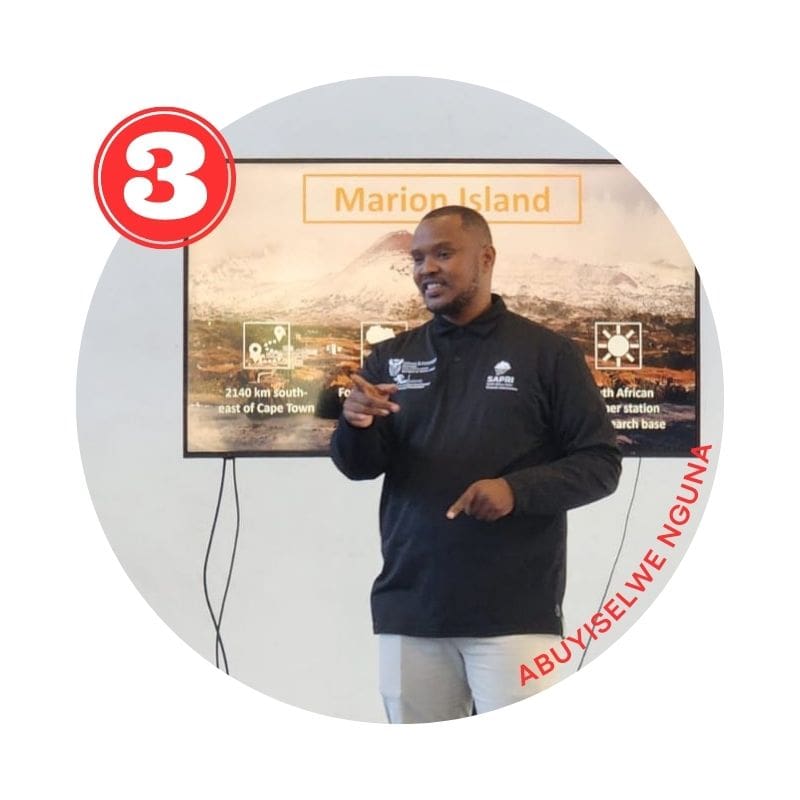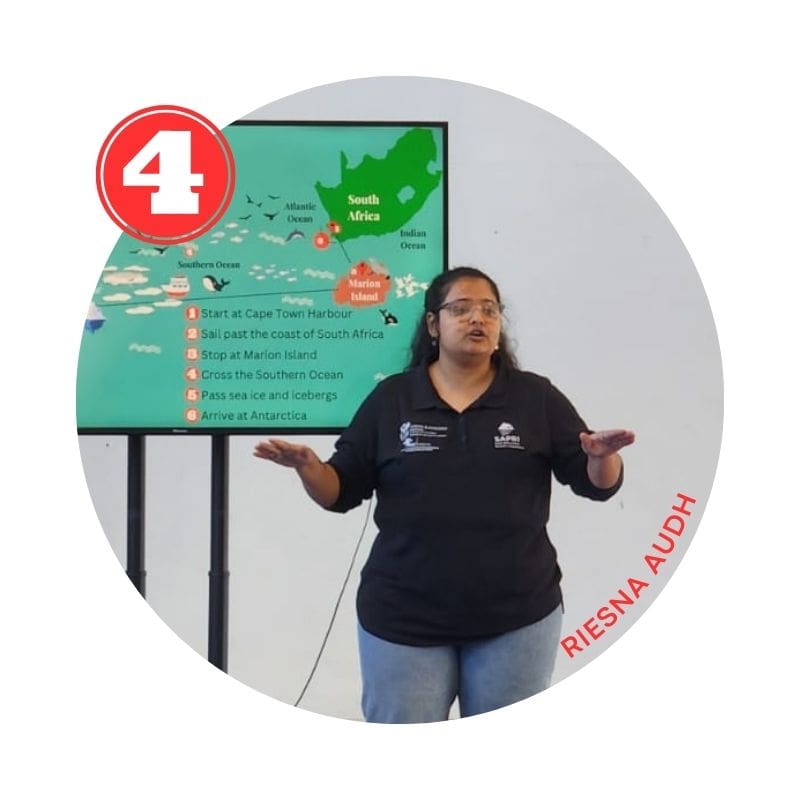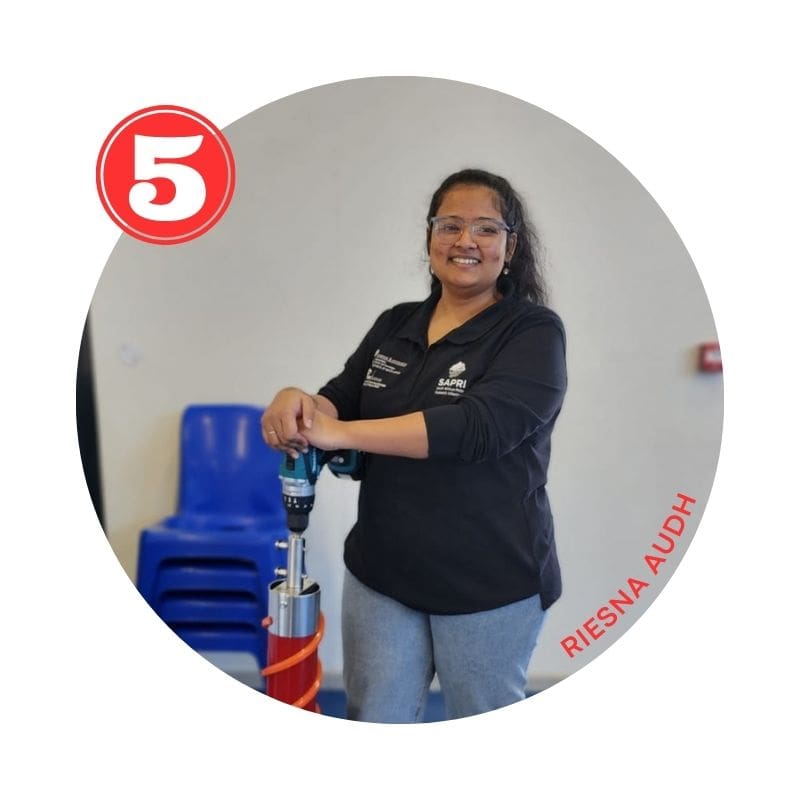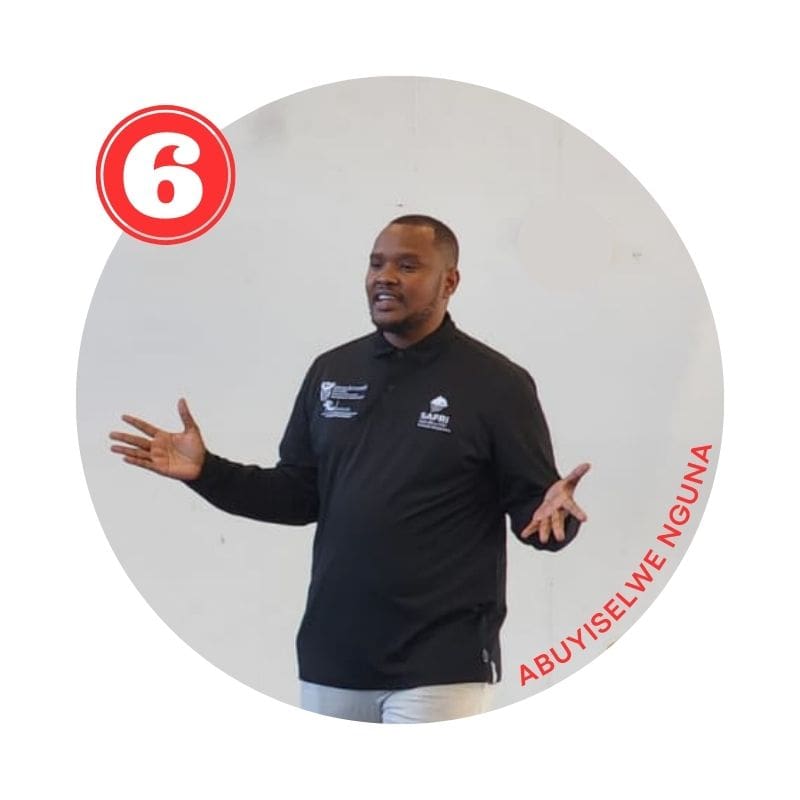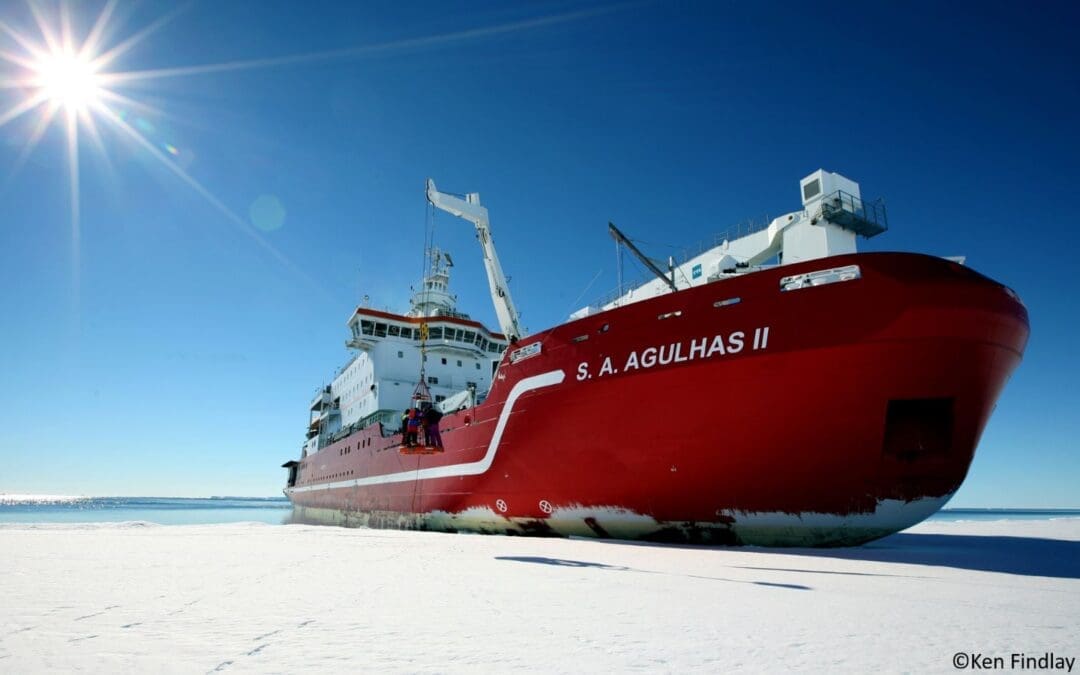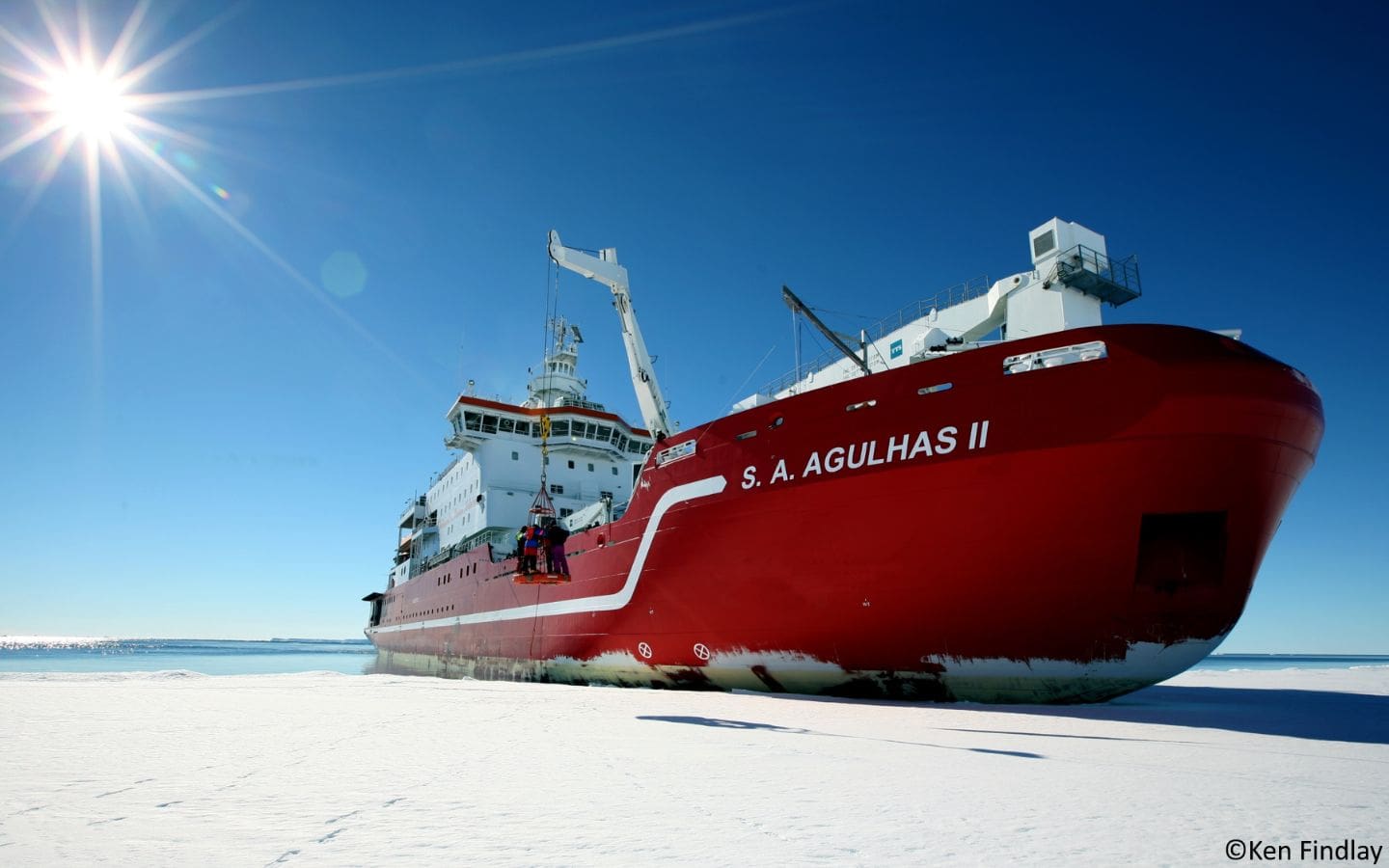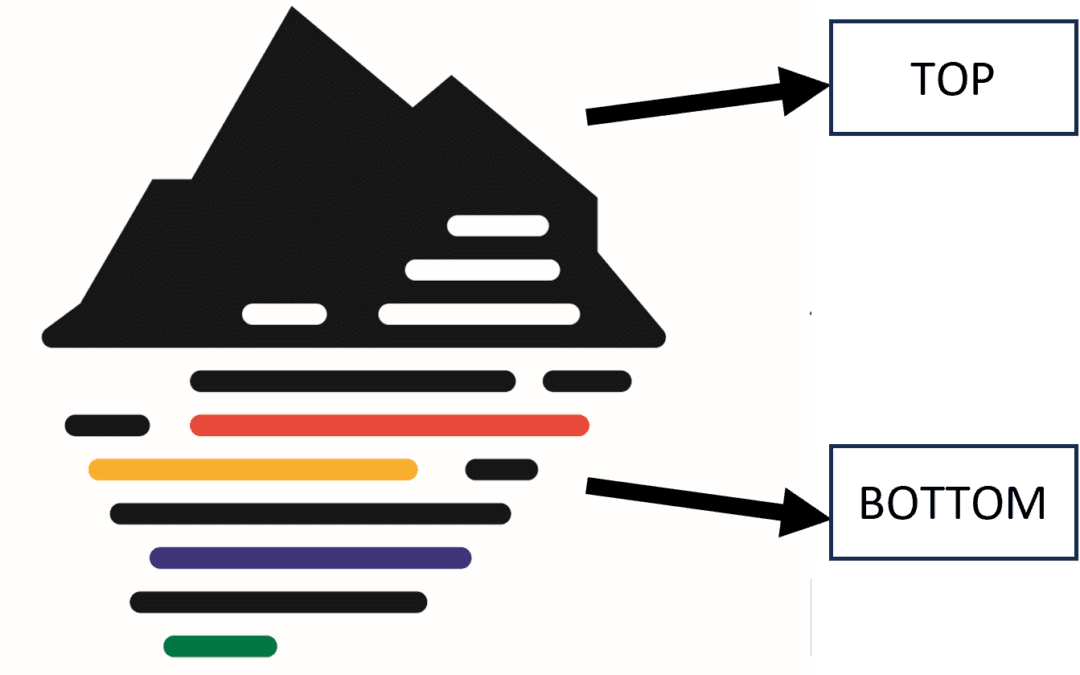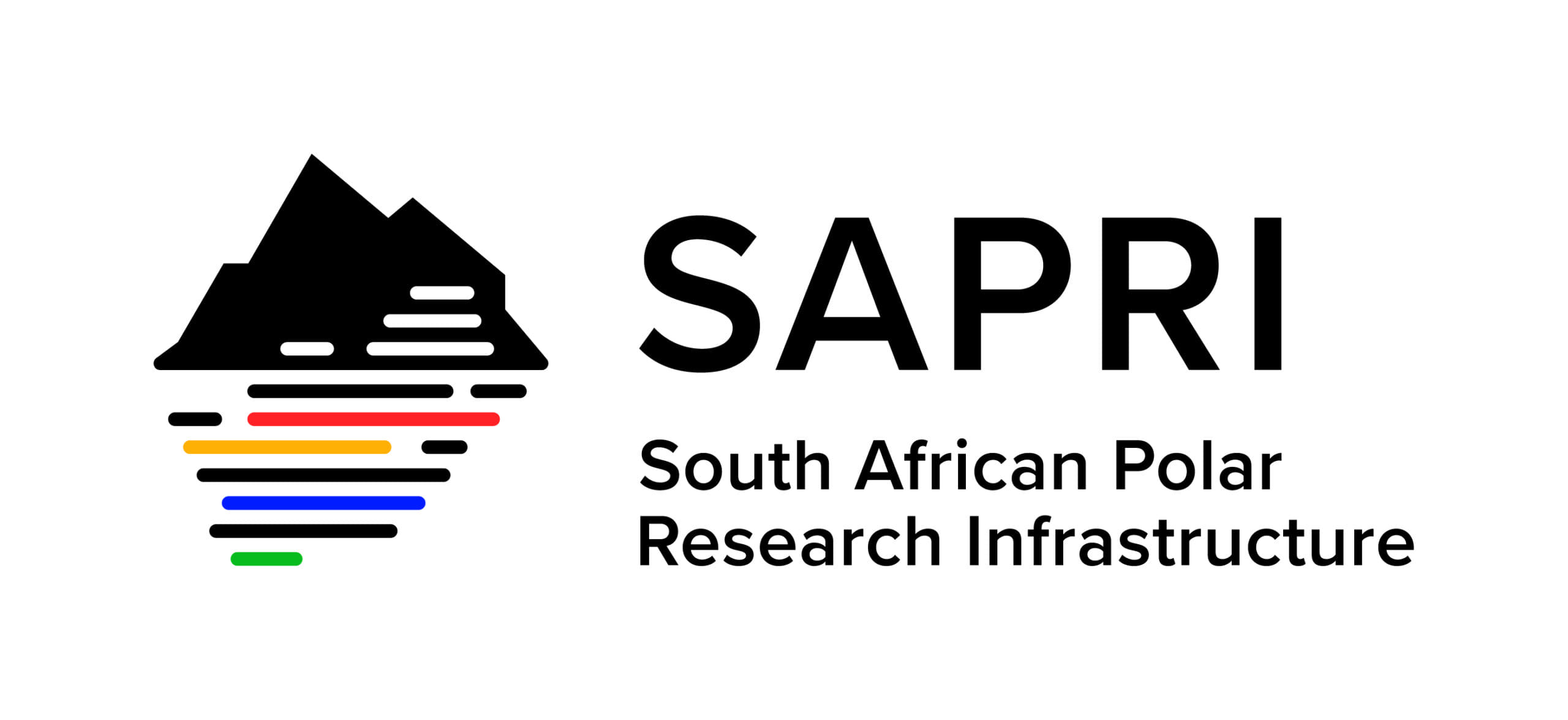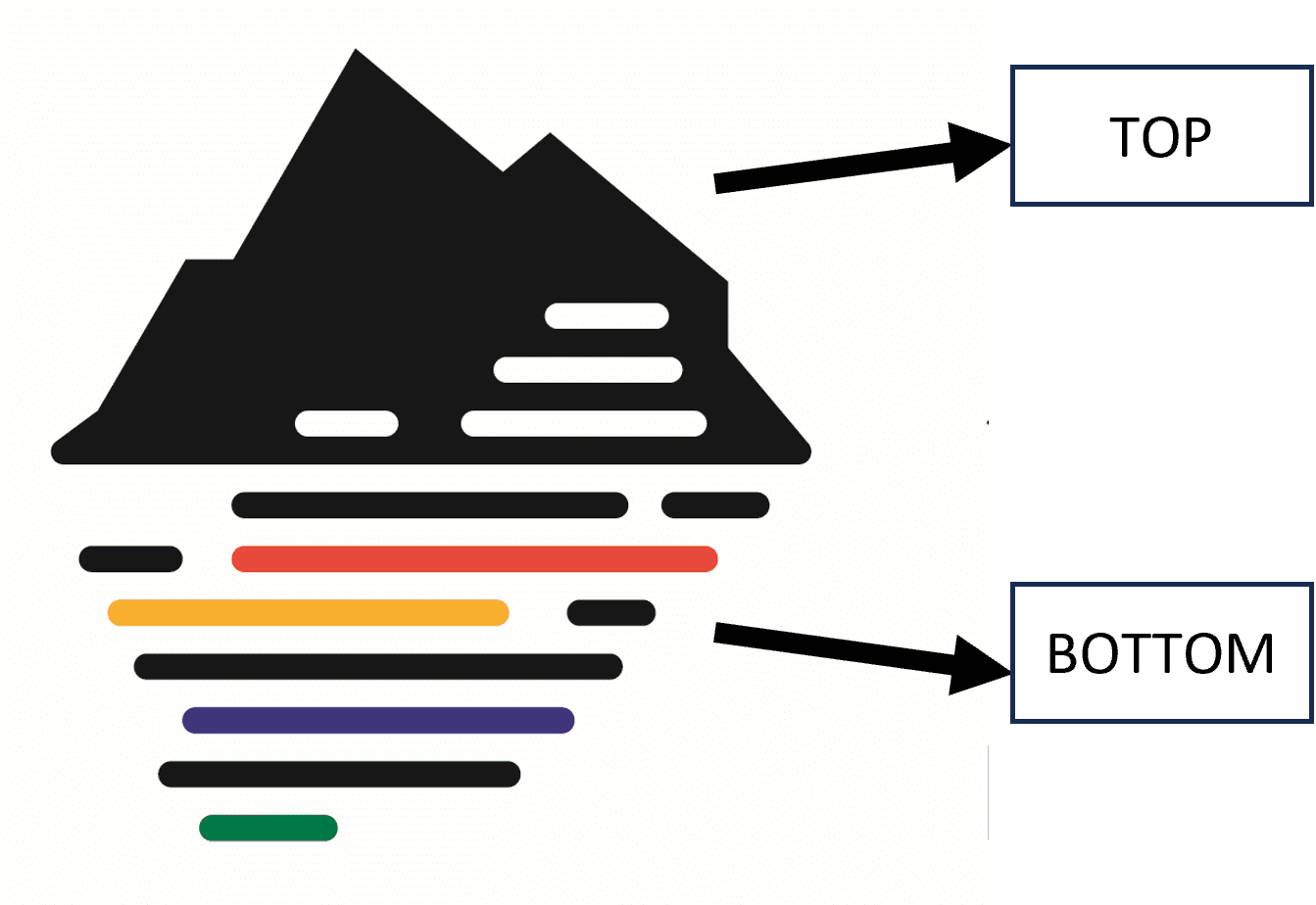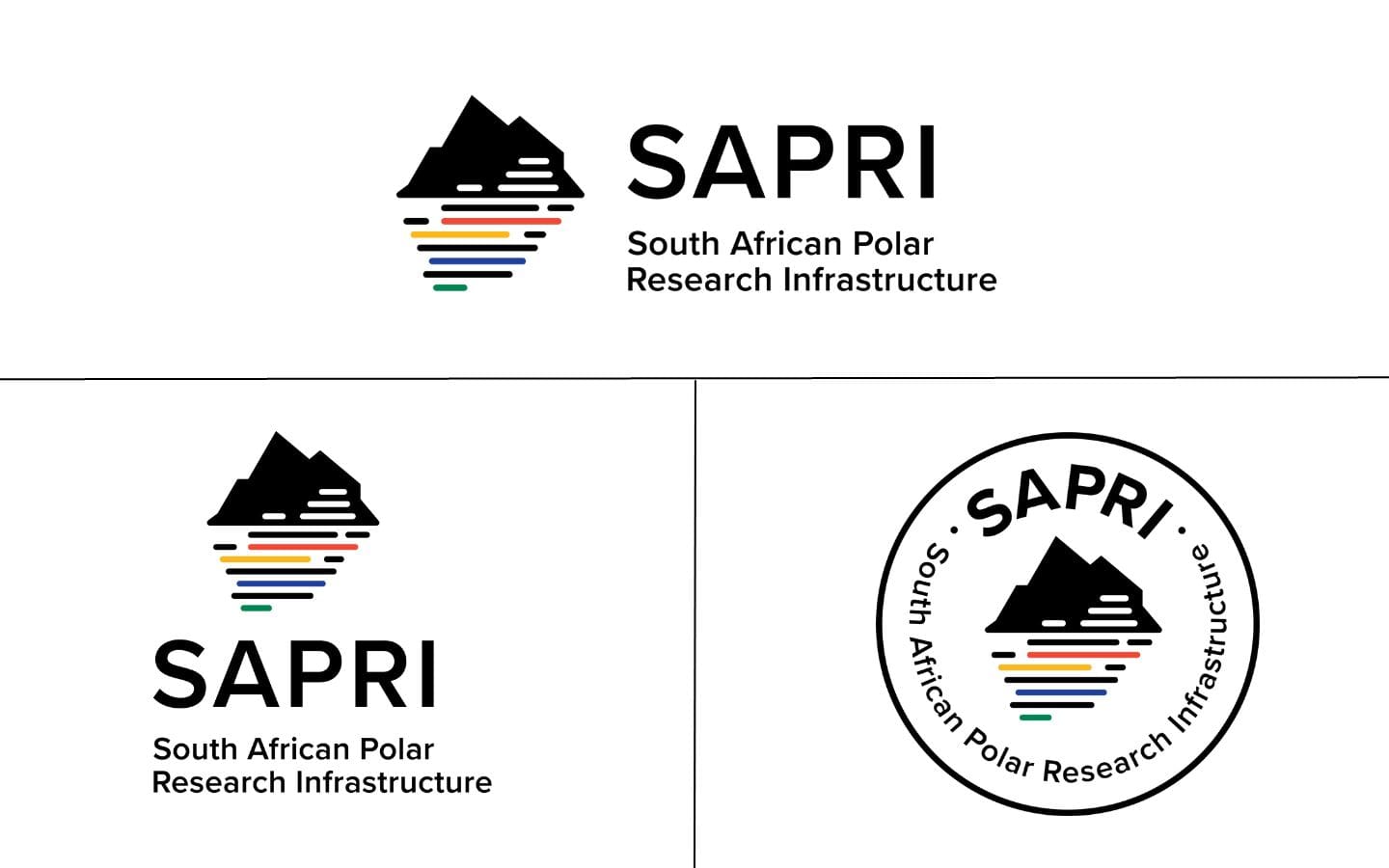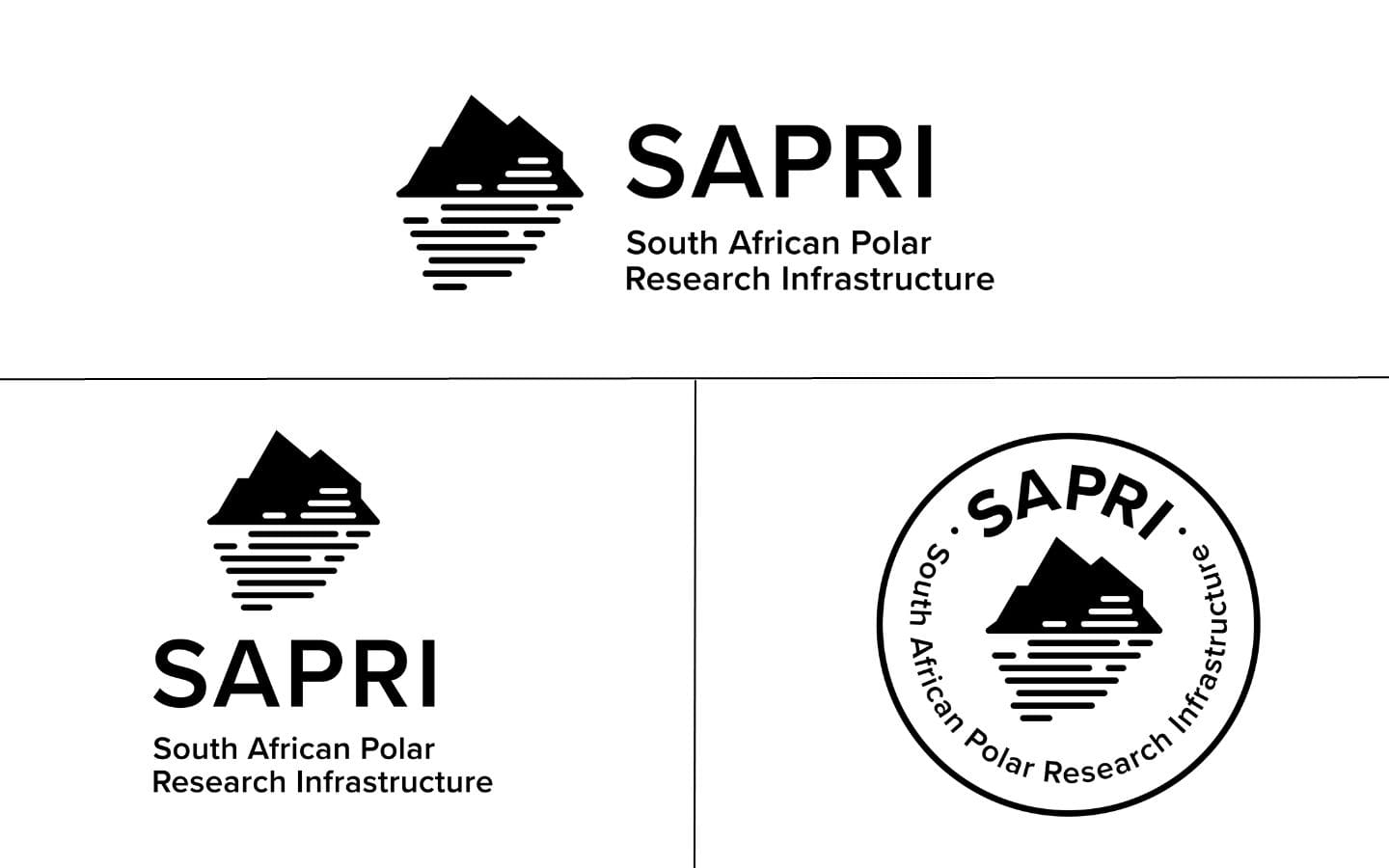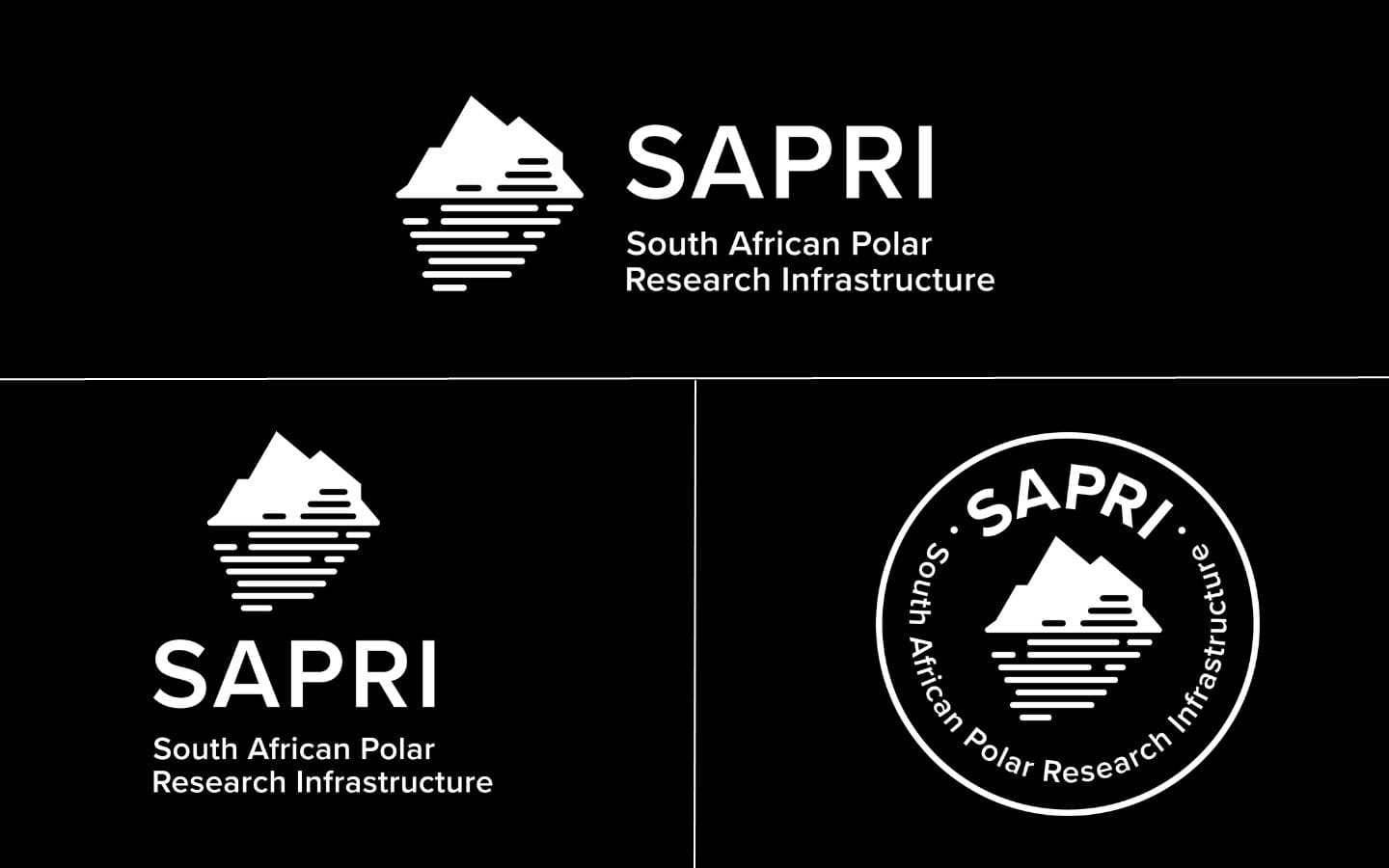
by Ria Olivier | Oct 5, 2023 | Announcement, Marion Island, News, Newsletters>Marion Island Newsletters, Overwintering Team, Prince Edward Islands, SAPolarRI, Science, Southern Ocean, Stations, sub-Antarctic, Team member
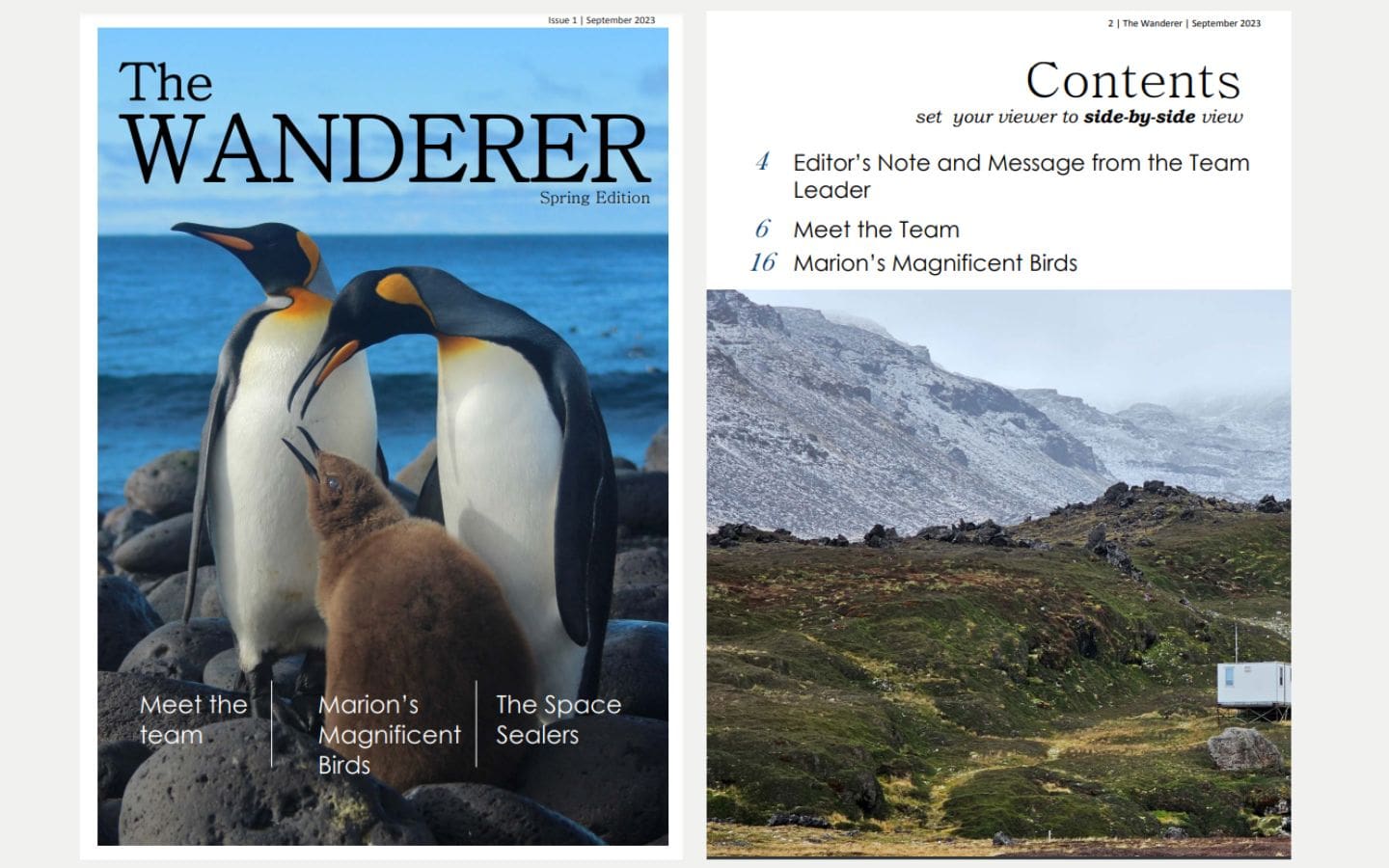
The 80th Marion Island overwintering team has published their first newsletter.
Content included in The Wanderer Spring Edition:
- Editor’s Note and Message from the Team Leader
“Hello from the little swampy volcano in the Southern Indian Ocean we call home, or Marion Island. The year has kicked off and the overwinterers have settled into their routines, just in time for it all to change. The Spring Edition of The Wanderer marks the beginning of a massive influx of wildlife onto the island, eager to breed and moult on this isle of paradise. Follow on as the chaos descends for field researchers alike and the hustle continues at the Base at Cabbage Point” ‐ Zafar Monier.
- Meet the team
- Marion’s Magnificent Birds
“Marion Island is home to 40% of the world’s Wandering Albatross population” Zafar Monier.
“M80 has the opportunity to conduct upper air ascends on our expedition twice a day, everyday of the year. Weather balloons are released simultaneously from different locations worldwide! On Marion Island we release the balloon at 12H00Z and 00H00Z (15H00 and 03H00 Marion local time)” – the 2023/2024 South African Weather Service Meteorological team members on Marion Island.
Click on the link below to download the first M80 newsletter.
M80 Newsletter: The Wanderer Spring Edition

The 80th Marion Island overwintering team. This photo was taken before the last helicopter flight to the S.A. Agulhas II, at the end of the 2023 takeover. The ship departed from Marion Island to Cape Town late afternoon of 12 May 2023. Image: Michelle Risi.
Anche Louw, Co-Principal Investigator of Antarctic Legacy of South Africa and Digital Marketing and Communications Manager of the South African Polar Research Infrastructure, 05 October 2023.

by Ria Olivier | Sep 29, 2023 | Marion Island, Research, Science
A few hundred million years after the big bang, the first stars in the universe were born during a period known as cosmic dawn.
This epoch is uncharted territory: the first and only tentative detection of cosmic dawn was reported in 2018, thus opening a new window into the universe’s past that is ripe for new discoveries.
 Telescopes aiming to study cosmic dawn must observe at radio frequencies (<150 MHz). These frequencies are exceptionally difficult to measure because of contamination from terrestrial radio-frequency interference and ionospheric effects.
Telescopes aiming to study cosmic dawn must observe at radio frequencies (<150 MHz). These frequencies are exceptionally difficult to measure because of contamination from terrestrial radio-frequency interference and ionospheric effects.
Our team has demonstrated that Marion Island truly offers a South African geographic advantage for low-frequency radio astronomy. The radio-quiet environment of Marion is unparalleled, surpassing even the Karoo desert, which is one of the premier radio observatory sites and the future location of the Square Kilometre Array (SKA).
With its clean observing conditions, Marion Island gives a unique opportunity to deliver high impact science that is impossible to conduct anywhere else in the world.

Radio astronomy experiment (ALBATROS) on Marion Island.
The project has installed two radio astronomy experiments on Marion Island. The first, named PRIZM, is searching for the signal from cosmic dawn and has been operating for three years. We are continuing these observations, coupled with instrument upgrades and rigorous calibration campaigns in order to obtain a robust detection. The second experiment, ALBATROS (above), is a companion project that aims to image the radio sky at <30 MHz, improving upon the resolution of current results by a factor of 20-30.
We have proven the technology with a few pathfinder antennas, and we are building and installing additional antennas to complete the full ALBATROS array. Our work is well timed to take advantage of the current solar minimum. The reduced ionospheric activity may allow us to probe the sky at particularly low observational frequencies that are otherwise difficult or impossible to access.
Prof Kavilan Moodley is the Principal Investigator on the project hosted at The Astrophysics Research Centre (ARC) at the University of KwaZulu-Natal (UKZN). The Astrophysics Research Centre (ARC) is part of the College of Agriculture, Engineering and Science at UKZN. We strive to be a world-class centre of excellence for research and postgraduate training in astrophysics and related data-intensive science. The management of the project is done by Prof. H. Cynthia Chiang and Prof. Jonathan Sievers.
Read a recent Q&A session with Professor Cynthia Chiang, experimental physicist, in the Quanta Magazine. See link below.
The Experimental Cosmologist Hunting for the First Sunrise | Quanta Magazine

Read here more about the project.
Text and Images by Prof Cynthia Chiang, Originally posted on 12 August 2021.
Edited by Anche Louw, South African Polar Research Infrastructure, 29 September 202

by Ria Olivier | Sep 13, 2023 | Announcement, Antarctica, Engineering, Gough Island, Marion Island, News, Prince Edward Islands, Research, SA Agulhas II, SA Polar Research Infrastructure, SANAP, SAPolarRI, SAPRI, Science, Southern Ocean, Stations

On the 1st of August, Errol Julies joined the South African Polar Research Infrastructure (SAPRI) as a Senior Electronics Technician, bringing with him a wealth of experience and a diverse skill set. His responsibilities at SAPRI encompass the maintenance of offshore marine infrastructure, asset management and supply chain management processes, providing technical support to researchers and students, ensuring compliance with the Occupational Health and Safety Act, and upgrading communication systems at the South African National Antarctic Programme (SANAP) research stations (bases), particularly the High Frequency (HF) systems at Marion Island between the base and field huts. Errol’s previous background and experiences make him an ideal fit for his role at SAPRI, where he continues to make significant contributions.
Meet Errol Julies: A Remarkable Journey of dedication and expertise
Errol Julies, hailing from the small town of De Doorns and having attended secondary school in Worcester, has embarked on an extraordinary path that has led him to become a highly accomplished professional in the scientific and research field.
Errol’s initial foray into the world of work began as an assistant train driver, but it was his introduction to the scientific realm at the Hermanus Magnetic Observatory (HMO), now known as the South African National Space Agency (SANSA), that truly ignited his passion. Starting as a general cleaner at HMO, Errol simultaneously pursued part-time studies and eventually obtained a BTech degree in Electrical Engineering.
For an impressive 17 years, Errol served as a Geomagnetic Observatory Technician at SANSA. In this role, he excelled in installing, maintaining, and monitoring geomagnetic and Magnetotelluric stations across Southern Africa. These stations adhered to the esteemed INTERMAGNET standards, a testament to Errol’s dedication in ensuring their construction and upkeep at the highest level. Additionally, Errol played a pivotal role in training aspiring geomagnetic observers from around the world during the biannual geomagnetic workshops hosted in different countries.
In 2015, Errol joined the Department of Forestry, Fisheries and the Environment (DFFE) as an Engineering Technician, specialising in telecommunications and instrumentation. His responsibilities encompassed managing the Very Small Aperture Terminal (VSAT) communications system from Cape Town to the SANAP bases, conducting calibration and testing of electronic equipment and instruments, and overseeing the maintenance and upgrade of electronic and HF equipment at all SANAP bases in accordance with specifications. Furthermore, Errol took on the role of Departmental Coordinating Officer (DCO), leading numerous voyages to the SANAP bases and successfully coordinating a voyage to Gough Island all by himself.
Driven by a thirst for knowledge and personal growth, Errol completed his BTech degree in Project Management in 2018, despite the challenges encountered during his voyage to Gough Island. In 2019 and 2020, he further demonstrated his resilience and expertise by overwintering on Gough Island as a Communication Engineer and team leader on the 65th Gough Island overwintering team. Currently, Errol is pursuing a Post Graduate Certificate in Education (PGCE), focusing on Mathematics and Mathematics Literacy for the Senior Phase and Technical Vocational Education and Training (TVET) colleges. This endeavor aims to support learners and students in his community through evening classes.
Errol Julies’ journey is a testament to his unwavering dedication, expertise, and commitment to excellence. His remarkable achievements and vast knowledge in the scientific and research field make him an invaluable asset to any organisation fortunate enough to have him on board.
Welcome to the SAPRI team, Errol!
Images supplied by Errol Julies.
Anche Louw, South African Polar Research Infrastructure, 13 September 2023

by Ria Olivier | Aug 25, 2023 | Antarctica, Legacy, Marion Island, News, Prince Edward Islands, Research, SA Agulhas II, SA Polar Research Infrastructure, SANAE IV, SANAP, SAPolarRI, Science, Southern Ocean, Stations, STEM, sub-Antarctic
The South African Polar Research Infrastructure (SAPRI) with the Antarctic Legacy of South Africa (ALSA) and the South African Environmental Observation Network (SAEON) Egagasini Node visited Generation Schools Imhoff, in Kommetjie on 20 July 2023.

Generations Primary is based on the Montessori ethos of independent children working and the Cambridge model of education. The school structure consists of various phases with mixed-age groupings “which allows children to work together, to learn from and teach each other.” The mixed-age group 9 – 12 years has recently completed projects and tasks related to the Antarctic environment, creating a space where learners can develop, in a creative way, a sense of the 7th continent. The invite to visit the school to further connect the application of academics in the real world was welcomed.
The 110 learners with teachers, were presented with a rhythmic exercise with boom-whackers (musical plastic tubes) as an ice-breaker activity, which was followed by a “Journey through the Southern Ocean, via Marion Island, to Antarctica”, which was presented by Ria Olivier (ALSA), Sikelelwa Mtyenene (SAEON Egagasini Node), Abuyiselwe Nguna (SAPRI) and Riesna R. Audh (SAPRI). Various interactive exhibits were set up in the school hall, which further gave learners the opportunity to interact with the ALSA, SAPRI and SAEON teams.
“Journey through the Southern Ocean, via Marion Island, to Antarctica”
Follow the journey below.

 | Start at Cape Town Harbour - Ria Olivier
History: Archivist with 10 years' involvement in SANAP and Principal Investigator of the Antarctic Legacy of South Africa project, talks about South Africa's involvement in the Antarctic regions. |
 | Sail past the coast of South Africa - Sikelelwa Mtyenene
Coastal voyage: research conducted in the coast off South Africa, where the Atlantic and Indian oceans meet. |
 | Stop at Marion Island - Abuyiselwe Nguna
Science weather, fauna and flora. The speaker shares his experience as a field assistant, part of a Marion Island overwintering team member. |
 | Cross the Southern Ocean - Riesna Audh
Oceanographic sampling on board the South African research and supply vessel, the S.A. Agulhas II. |
 | Pass seaice and icebergs - Riesna Audh
The speaker has been on board the S.A. Agulhas II during various Antarctic expeditions (counting to over 300 days in total), for her research on sea ice in the Antarctic marginal ice zone. She shares her experiences. |
 | Arrive at Antarctica - Abuyiselwe Nguna
What you can expect. Antarctic operations. Clothing (protective gear) and more info about the South African National Antarctic Expedition station (SANAE IV). |
Interactive exhibits
This collaborative science engagement event was focused on communicating marine and Antarctic research in such a way to foster curiosity for these regions. The school also received a set of books sponsored by the Antarctic Legacy of South Africa (see image below).
Video: Leaving fingerprints on Antarctica.
Graphic element (Journey to Antarctica) designed by: Riesna R. Audh, SAPRI, Polar Lab.
Anche Louw, South African Polar Research Infrastructure, 25 August 2023.

by Ria Olivier | Jul 17, 2023 | Announcement, Antarctica, Gough Island, Marion Island, Prince Edward Island, Prince Edward Islands, Research, SA Agulhas II, SA Polar Research Infrastructure, SANAP, SAPolarRI, SAPRI, Science, Southern Ocean, Stations, STEM, sub-Antarctic

In 2015, The Department of Science and Technology (DST) facilitated the first dedicated oceanographic winter expedition on the S.A. Agulhas II from 23 July – 14 August 2015. The success of this expedition and others that followed demonstrated the need expressed by the wider marine and Southern Ocean research community and has prompted the DSI to secure funds for additional dedicated research expeditions in 2024, 2025 and 2026. The number of dedicated research expeditions will depend on the need expressed and the funding available. The core objective is to develop a comprehensive marine and Antarctic research expedition plan for 2024-2026, underpinned by the Marine and Antarctic Research Strategy (MARS) and contributing to the United Nations Decade of Ocean Sciences for sustainable development. These dedicated research expeditions will not only encompass oceanography but will provide research opportunities for marine-related and South African National Antarctic Programme (SANAP) –related research.
MARS was developed to provide a platform from which to coordinate marine and Antarctic research. The assumption is that improved coordination of a currently fragmented science system will improve returns on investment. Structured planning and a guided strategic focus will maximize human capital development and bring South Africa to the international forefront of knowledge production in these research areas. From this will follow innovation, increased international influence, and ultimately, economic growth.
The NRF and the South African Polar Research Infrastructure (SAPRI) have been tasked with coordinating various activities that will feed into improved planning and coordinating of marine and Antarctic research activities. As such, the NRF together with SAPRI would like to maximise on the opportunities for dedicated expeditions based on research community needs to enable long-term planning for expeditions, including sourcing funding for such expeditions. Dedicated expeditions may be implemented in periods where the S.A. Agulhas II is available. The schedule for the annual relief voyages indicate periods when the S.A. Agulhas II is not available (relief voyages for Antarctica, Marion Island and Gough Island). The direction (expedition transects), duration (including number and types of stations) and research focus of each dedicated research expedition would then be decided on by the DSI, together with the NRF, based on such variables as proposed participation, research area alignment, MARS theme alignment, contribution to the Ocean Decade and overall return on investment (data collection and capacity development.). To this end, SAPRI can support the costs of any in person meetings required to discuss collaborative research expeditions.
It should be noted that the attached annexure may change depending on the activities of the Department of Forestry, Fisheries, and the Environment (DFFE). For example, an emergency may require DFFE to deploy the S.A. Agulhas II to enable the Department of Public Works to do building maintenance and repairs at any of the three bases. As such, all potential dedicated expeditions will need to be approved by the DFFE before final planning can begin.
Please complete the template and return to tj.klarenbeek@risa.nrf.ac.za no later than 15 August 2023. The completed templates will give an indication of research community demand. More detailed research plans will be requested hereafter.
Expression of interest – dedicated S.A. Agulhas II voyages
Text: Expression of interest, Participation in dedicated research expeditions 2024, 2025, 2026. Tracy Klarenbeek, Director: Knowledge Advancement and Support (KAS), National Research Foundation (NRF), Research Innovation Support and Advancement (RISA).

by Ria Olivier | Jul 12, 2023 | Announcement, Antarctica, Gough Island, Marion Island, News, Research, SA Agulhas II, SA Polar Research Infrastructure, SAPolarRI, SAPRI, Science, Southern Ocean, Stations, sub-Antarctic

The South African Polar Research Infrastructure (SAPRI) is getting a corporate identity (CI).
The South African Polar Research Infrastructure (SAPRI) is one of 13 large Research Infrastructures (RIs) developed by the Department of Science and Innovation (DSI) as part of the South African Research Infrastructure Roadmap (SARIR).
The SAPRI was established in 2021 to ensure coordination of South African marine and Antarctic research as a national Big Science programme, providing seamless access to existing and new research infrastructure required to develop and enhance long-term observations of South Africa’s polar region.
The ultimate objective of SAPRI is to enable balanced research growth across the polar disciplines, and to maintain and further expand the world-class long-term observational datasets already established.
The SAPRI is designed as a consortium hosted at the South African Environmental Observation Network (SAEON), a long-term environmental observation and research facility of the National Research Foundation (NRF).
The SAPRI logo
The first step of the SAPRI CI was the design of a logo. The CI vendor has worked with a somewhat complicated brief, making sure that the CI is inclusive of marine and polar (land and sea), not focusing on one specific aspect within SAPRI.
The brief furthermore included:
- Transforming, strengthening and consolidating SA’s marine and polar sciences.
- Recognisable, professional and accessible.
- Pride in SA’s involvement in marine and polar research.
SAPRI logo rationale:
 The graphic element in this logo is a representation of SAPRI’s infrastructural support to research on both land and at sea.
The graphic element in this logo is a representation of SAPRI’s infrastructural support to research on both land and at sea.
While the top part is representative of land features of Antarctica and sub-Antarctic islands (e.g. ice, mountain), the bottom section represents water, or the ocean, as well as the shape of South Africa as seen on a map. In addition, the simplistic lines used to form the water is a rudimentary representation of data and the continuity of research.
To make for a versatile logo, transferable to different materials and backgrounds, various modifications can be used.
 The main logo will have the colours of the South African flag incorporated.
The main logo will have the colours of the South African flag incorporated.
Full colour versions (horizontal, vertical or in a circle):

Black versions (horizontal, vertical or in a circle):

White versions (horizontal, vertical or in a circle) – to be used on a full colour backgrounds:

Read more about SAPRI here.
Note that the SAPRI website is currently in the design and development phase.
Anche Louw, South African Polar Research Infrastructure (SAPRI DPS Node), 12 July 2023
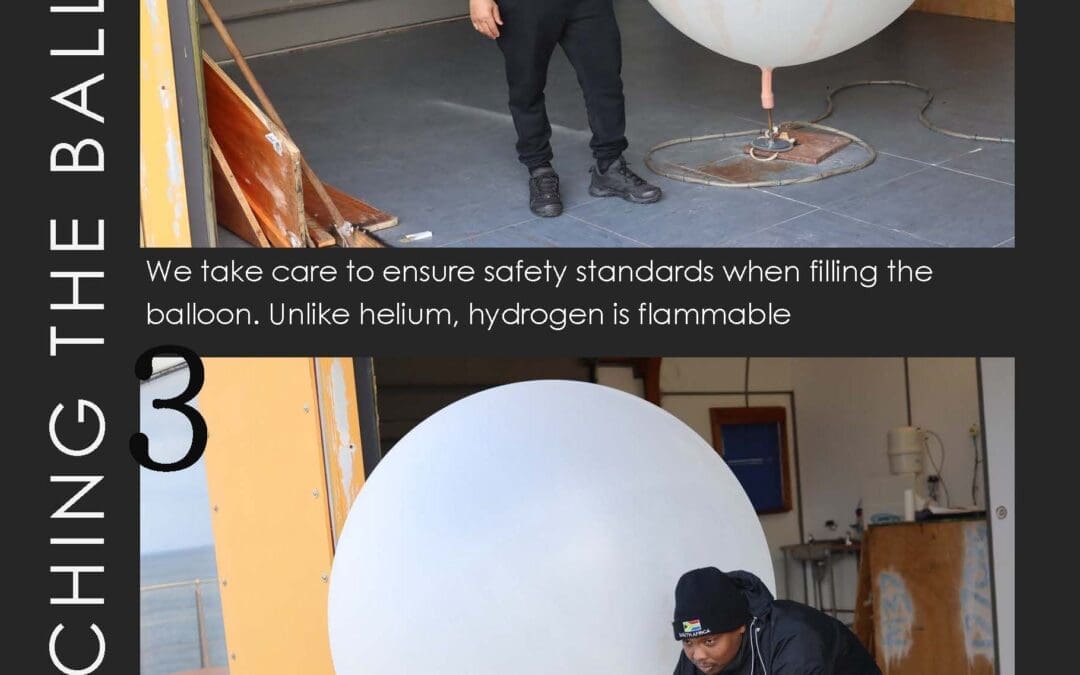



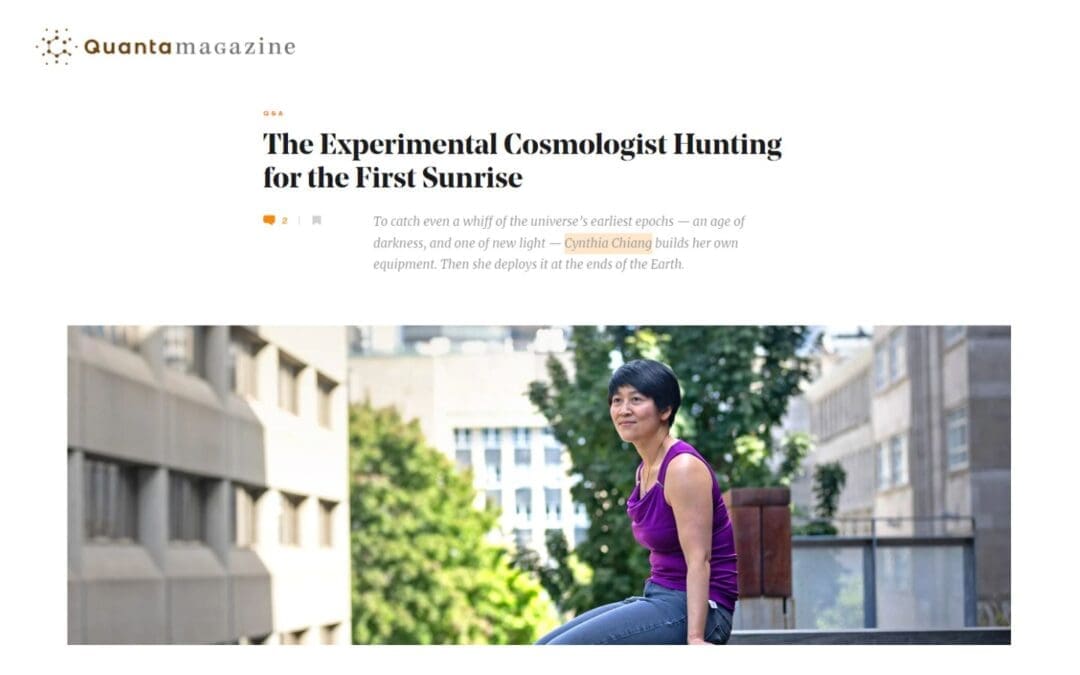
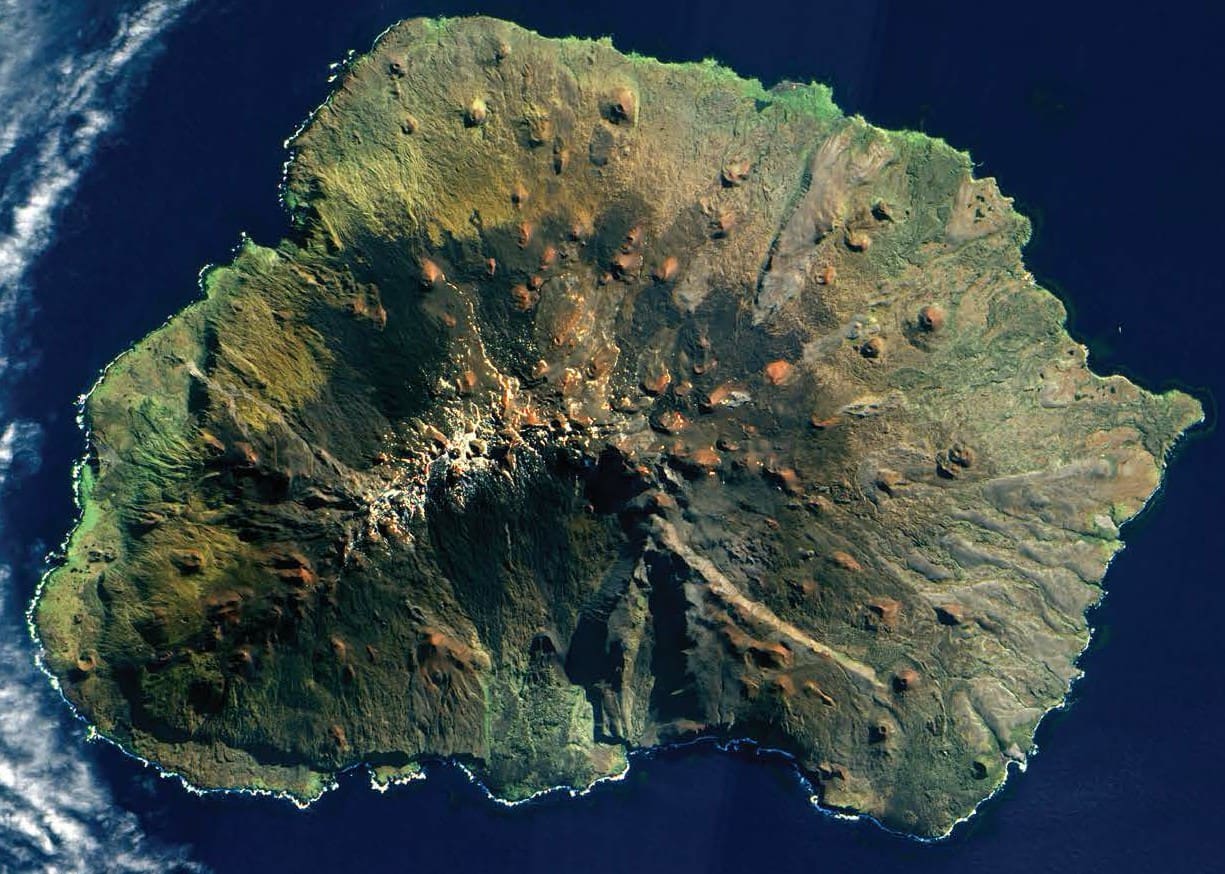 Telescopes aiming to study cosmic dawn must observe at radio frequencies (<150 MHz). These frequencies are exceptionally difficult to measure because of contamination from terrestrial radio-frequency interference and ionospheric effects.
Telescopes aiming to study cosmic dawn must observe at radio frequencies (<150 MHz). These frequencies are exceptionally difficult to measure because of contamination from terrestrial radio-frequency interference and ionospheric effects. 